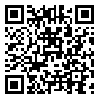Volume 27, Issue 1 (Spring 2023)
jwss 2023, 27(1): 45-58 |
Back to browse issues page
University of Tehran , khashayar.peyghan@ut.ac.ir
Abstract: (1095 Views)
Population growth and limited water and soil resources make it necessary to pay attention to the factors affecting food production, including the suitability of irrigation methods with agricultural lands. The objective of this study was to assess land suitability for surface, drip, and sprinkler irrigation methods based on a parametric evaluation system in an area of 250 hectares in the Shahid Rajaei plain of Khuzestan. Soil properties were analyzed, then suitability maps for different irrigation methods were prepared using a geographic information system (GIS). The results showed that for surface irrigation, 704 ha (31.3%) was marginally suitable (S3), 866 ha (38.5%) was currently not suitable (N1), and 680 ha (30.2%) was permanently not suitable (N2). For drip irrigation, 8 hectares (0.4%) are highly suitable (S1), 644 hectares (28.6%) are moderately suitable (S2), 52 hectares (2.3%) are marginally suitable (S3), 866 hectares (38.5%) were currently not suitable (N1), and 680 hectares (30.2%) were permanently not suitable (N2). For sprinkler irrigation, 652 hectares (29%) are moderately suitable (S2), 52 hectares (2.3%) are marginally suitable (S3), 866 hectares (38.5%) are currently not suitable (N1), and 680 hectares (30.2%) were permanently not suitable (N2). According to the results, sprinkler irrigation with an irrigation capability index of 29.9 to 60.7 in 2242 hectares (99.6%) is preferable to other irrigation methods. Drip irrigation in 8 hectares (0.4%) was found to be the most suitable method. The main limiting factors in using all three irrigation methods included salinity, alkalinity, and drainage. Also, soil calcium carbonate was added to the limiting factors in drip irrigation.
Keywords: Sprinkler irrigation, Surface irrigation, Drip irrigation, Land suitability, Parametric evaluation system
Type of Study: Research |
Subject:
Ggeneral
Received: 2022/03/2 | Accepted: 2022/09/5 | Published: 2023/05/31
Received: 2022/03/2 | Accepted: 2022/09/5 | Published: 2023/05/31
| Rights and permissions | |
 | This work is licensed under a Creative Commons Attribution-NonCommercial 4.0 International License. |




